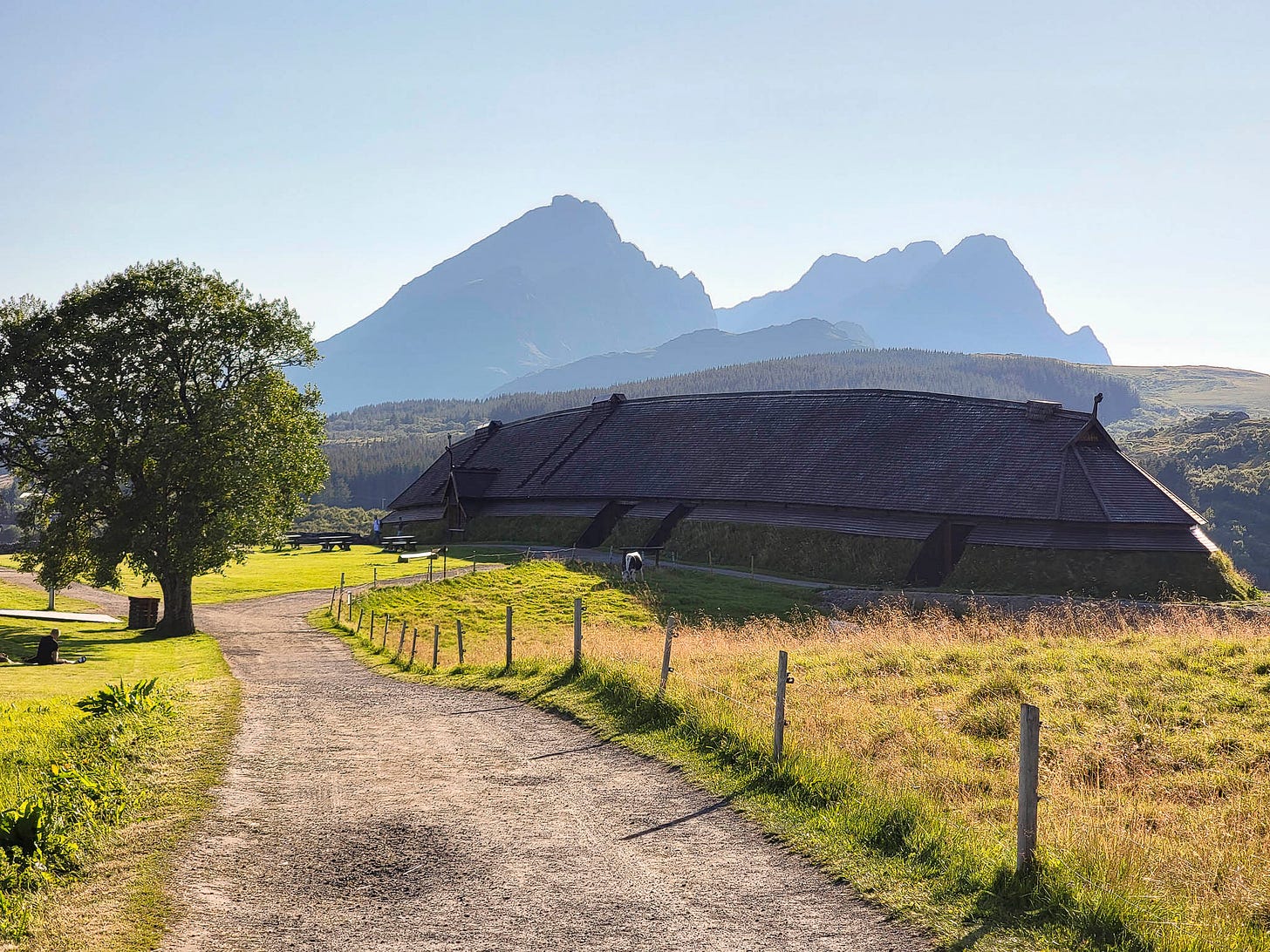If you’ve never visited Norway before, I’d recommend doing the Norway in a Nutshell self-guided tour. By train and ferry, you’ll get a sampler of the country’s stunning landscapes between Oslo and Bergen in as little as one day if you press it.
Since it was our second visit, we headed farther north to explore the Arctic Circle, landing in Narvik, gateway to the Lofoten Islands. We were booked at a hotel about a mile away. To our dismay, the local taxis go off duty at 11 pm, and we rolled up at 11:04. It was a nice night for a walk.
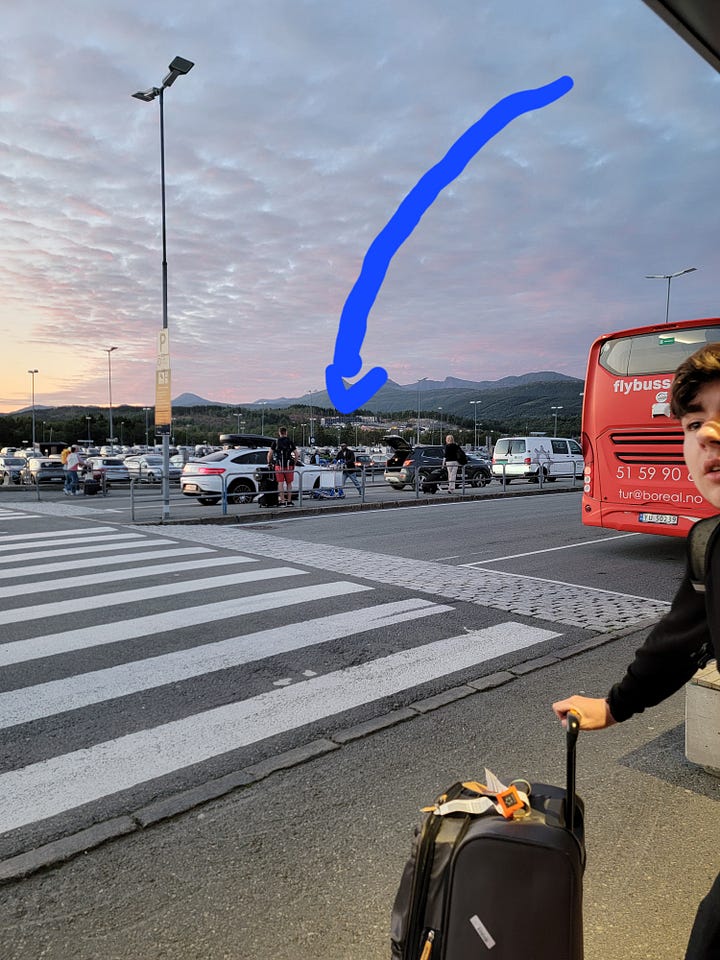
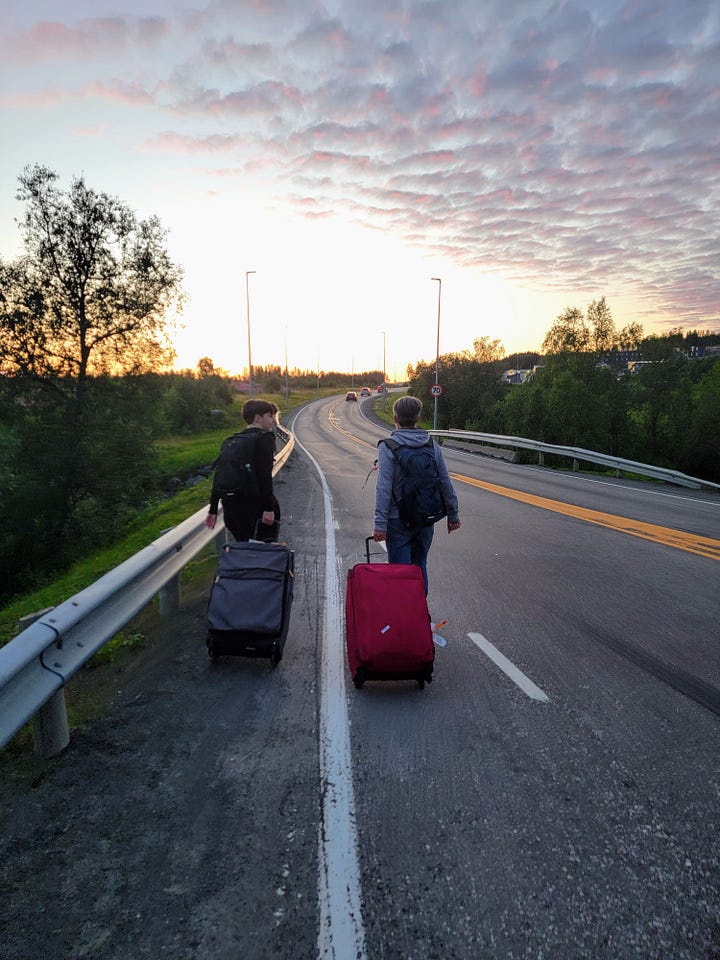
Five seconds later, I succumbed to Covid (who could’ve guessed being in contact with 2000+ people on a cruise ship might end that way?!) While Tim drove our rental car down the archipelago, periodically “Wow!”-ing at the next beautiful landscape, I lay collapsed across the back seat.
We had a cute apartment on a small harbor. Over the next week, the boys did a few brilliant hikes while I spent the week in the porch hammock or on the couch. I wrote a snarky account of it here.

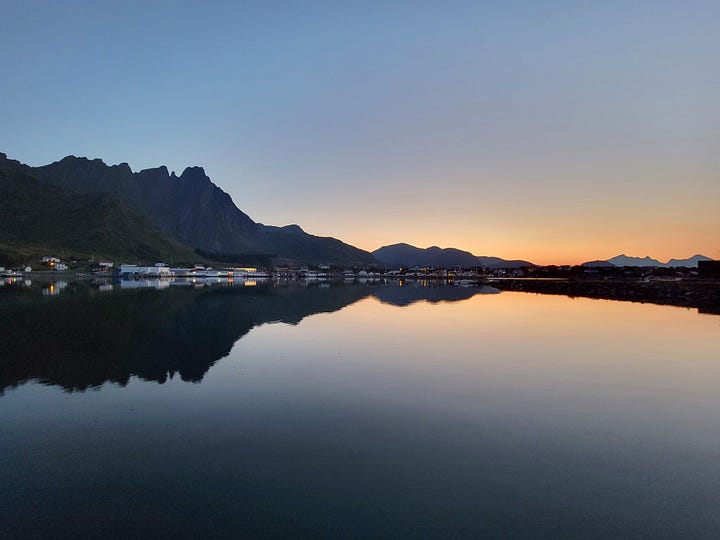
At the end of the week, I rallied enough to take a walk around our little island for a few photographs.


The Viking Museum
The main event of the Lofotens for me, however, was a visit to the Lofotr Viking Museum and an after-hours dinner experience.
The Viking Museum is based on an archaeological excavation of a Viking chieftain's village that existed on the site more than a thousand years ago. It features a reconstruction of the largest longhouse ever found from the Viking Age, and encompasses a large amount of land.
The visitor center houses the ticket area, shop, exhibits and a film. Once past the remains of the original longhouse and its reconstruction, it’s a twenty minute walk through rolling pastures down to the lake. There’s an area dedicated to axe throwing, archery, and pony rides, but the real draw is the chance to sail in a Viking ship made to the exact specifications of an original from c. 900 AD.

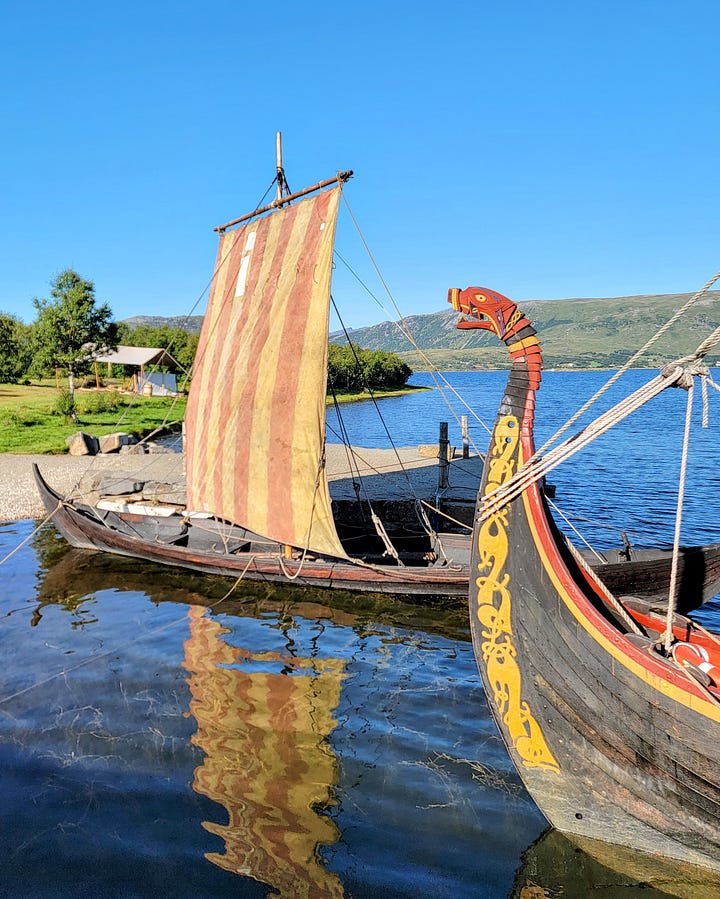
We boarded the 78 foot ship with about 15 other people. Though we descended three steps to reach the deck, once standing aboard, the sides of the boat only reached to my waist, which didn’t seem nearly tall enough. Waves wouldn’t need to be very high to slosh over. It wasn’t a worry for our ride, but I couldn’t help but wonder how it could not swamp with water when trying to cross an ocean to England, Iceland, Greenland, or Canada.
There was hardly a breeze on shore, but once untied, the purple-striped sail half-filled and we coasted into the center of the lake. The costume-clad skipper told us about the local network of trade via fjord and sea between otherwise isolated villages before returning us to shore.
At closing time, we wandered up to explore the longhouse before dinner. A central aisle runs the length of the building. Huge carved pillars held up the roof and naturally divided the spaces between them into informal rooms. One half of the building was dedicated to the domestic with areas to weave, dry fish, play games, and sleep. The other half of the building was more formal, designed to receive and feed guests while the chieftain presided from his elevated seat beside a freestanding hearth.

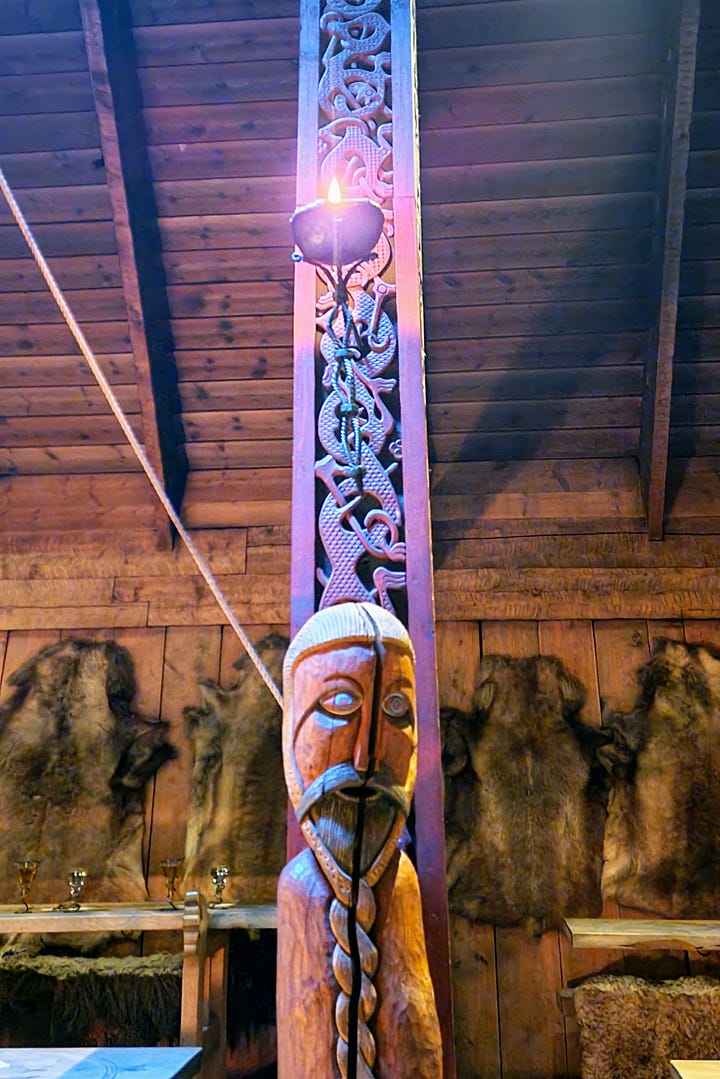
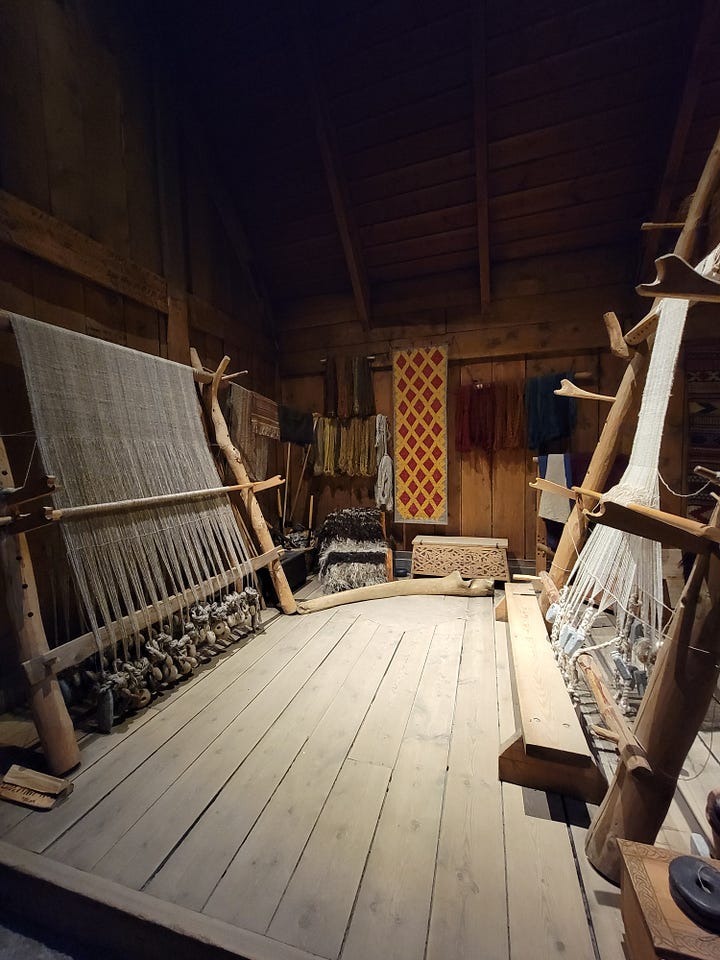

Our dinner consisted of local lamb, carrot, barley, and a hard bread with butter and jam, all authentic Viking Age foods. There was mead to drink while the actors entertained with period song and dance and performed the rituals required to bless the upcoming journey of the chieftain to a faraway village. It wasn’t a Broadway performance, sometimes stilted and seemingly improvised on the spot, but still as close as you can come to time travel. It’s well worth a visit.





